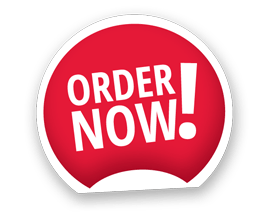Internal Code : MAS5843
ULO 2: Analyse the assessment and treatment of mental illness in the community via health care teams and specifically the roles of individuals within those teams;
ULO 4: Identify appropriate psychosocial interventions in caring for people with major mental health disorders; and
ULO 5:Critically analyse legal and ethical principles that influence and constrain health care professionals in mental health contexts.
Behaviour change is often difficult – whether it is assisting a patient or client to change his or her behaviour in order to promote mental wellbeing or changing your own behaviour. Health professionals often blame a person’s lack of behavioural change on the person’s unwillingness to participate and ‘comply’ with instructions and suggestions provided, whereas in reality behavioural change is an effortful process requiring active management and access to resources. Simply providing the person with education is not enough. So that you can get a sense of the complexities of behavioural assessment and change and develop greater empathy and understanding in regards to the people you care for, you will need to take a functional behavioural approach to assess and monitor a behaviour within yourself that you would like to change. You will also need to devise a functional behavioural intervention plan and approach to facilitate your own behavioural change. Your findings will be presented as a paper exploring your project. Here are the five steps to complete this project (these are not headings for your paper – please see p. 3 for your report’s headings):
Question – A. Identify and examine a target behaviour related to mental wellbeing that you are currently doing and you wish to change. This must be a behaviour that you are currently already doing and where you have a goal of wanting to do this less (i.e. your goal must be to decrease the frequency of this behaviour). Some suggestions are listed below but you are free to choose a behaviour not listed here. However, if you want to address a behaviour not listed below, you must first discuss this with your tutor to confirm it is suitable before starting:
1. Eating particular types of food (e.g. sugary foods etc.)
2. Smoking
3. Alcohol intake
4. Procrastination or chronic lateness
5. Screen time (e.g., use of smartphone or particular apps, binge TV watching etc.) There may be several behaviours you wish to change so choose the most urgent behaviour or the one with the most poor outcomes for you if you do not change it soon. In your paper, you will need to reflect on this target behaviour and why you would like to change it. Discuss and explain why you have not been able to change this behaviour before and the barriers to change. How long have you been wanting to change this behaviour? What impact is this behaviour having on your own mental wellbeing? You will also need to identify a clear, specific, and measurable goal you want to achieve through changing your behaviour.
B. Obtain a baseline measurement and assessment of the target behaviour. Post-completion of Module 2 and over the course of seven days, you will need to count how frequently you normally engage in this behaviour, as well as the antecedents and consequences of the behaviour. Ensure that you do not change your behaviour because you know it is being measured – just do what you would normally do in relation to the behaviour. Please use the template in the appendices document available on Blackboard entitled “Behavioural Change Project Scatterplot” to track the frequency of your target behaviour across the day for each of the seven days. Please also use the template available on Blackboard entitled “Behavioural Change Project ABC Chart” and complete an ABC equation for three separate instances of the behaviour across the week in order to identify the antecedents and consequences of your target behaviour.
In your paper, you will need to summarise and discuss your scatterplot and ABC equations regarding the events surrounding the behaviour. Were you previously aware of how frequently you were engaging in the behaviour and its relationship to its antecedents and consequences? What have you learned about this behaviour and what occurs when you engage in it?
C. Identify and examine the functional behavioural pathway (ABC-FR) of your target behaviour. Using the data you have collected about your target behaviour, you will need to identify the functional behavioural pathway (ABC-FR) for your target behaviour. Please use the template in the appendices document available on Blackboard entitled “Behavioural Change Project Behavioural Pathway and Interventions” to complete this. In your paper, explain the function of your behaviour and what purpose it serves for you in relation to the antecedents and consequences of the behaviour. What reinforcement contingency is maintaining this behaviour?
D. Generate a specific functional intervention behavioural change plan to change the target behaviour. Now that you have determined the function of the behaviour and have a clear understanding of the reinforcement contingencies maintaining that behaviour and the antecedents and consequences of that behaviour, generate a functional behavioural plan with specific strategies to address and change that behaviour. Please use the rest of the template in the appendices document entitled “Behavioural Change Project Behavioural Pathway and Interventions” (i.e., the same template as used to identify the functional behavioural pathway) to ensure your functional intervention plan addresses all elements of your behavioural pathway. Your functional behavioural intervention plan needs to contain preventative, replacement, and outcome based strategies that will specifically work for you and your personal circumstances. For example, if one of your suggested interventions/strategies requires the use of a car and you do not have access to one then it is not going to work for you and be successful. In your paper, you will need to summarise your plan and intervention strategies in relation to your specific behavioural pathway and examine how the intervention plan you have devised will ultimately work to remove the function of the behaviour. What sort of specific reinforcement will you use in implementing your plan? How will you prevent relapse? How difficult is it going to be to implement your plan? How will you know your plan has worked and been effective? Predict your success and identify how you will overcome the obstacles and barriers that have been preventing you from changing the behaviour in the first place.
E. Reflections and applications to clinical practice. Once you have completed the above steps and project and have a good understanding of the complexities of behavioural change, lastly in your paper, reflect on the challenges of functional behavioural change for the people you care for in your role as a health professional. What specific changes will you make to your own clinical practice as a result of completing your own behavioural change project, particularly with respect to how you will facilitate and encourage the people you care for to change their behaviour, and improve and promote their mental wellbeing? This needs to be much more than just “I will be aware of this issue in future” – focus on what you are doing now and what clinical practice behaviours you will change as a result of the knowledge you have gained. Your final report should be structured in APA (6th ed.) format with the following headings:
Examination of Target Behaviour
Examination of Functional Behavioural Relationships
Maintaining Target Behaviour
Functional Behavioural Intervention Plan
Reflection and Applications to Clinical Practice
The first heading incorporates the work completed for section A above. The second heading incorporates the work completed for sections B and C. The third heading incorporates the work completed for section D. The last heading incorporates the work completed for section E. Your completed appendices should be attached at the end of your report, as they form the evidence and data on which you are basing your claims and conclusions.









